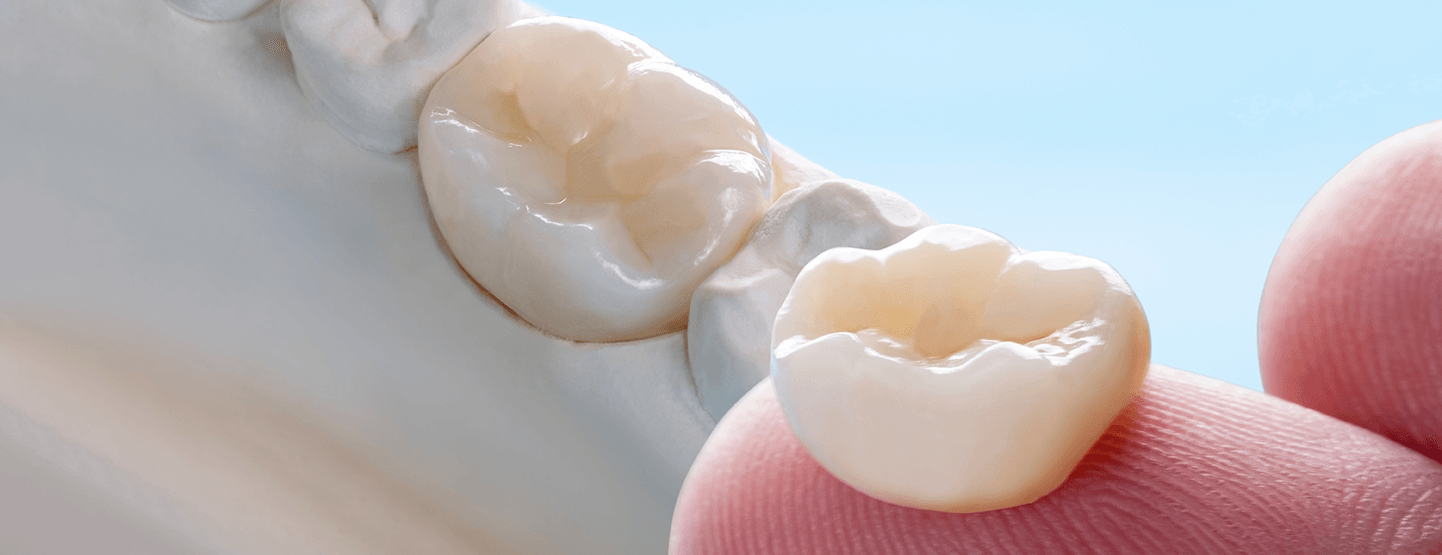
At 21st Century Esthetics, we believe that understanding the materials used in dental crowns is essential for making informed decisions about your dental health. When considering dental crowns, one of the most common questions patients ask is, “What are crowns made of?” This is an important topic because the choice of material directly impacts the crown’s durability, aesthetics, and functionality.
Dental crowns are designed to restore damaged or weakened teeth, but the material used can vary based on individual needs and preferences. The most popular options include porcelain, ceramic, metal alloys, and composite resins. Among these, porcelain and ceramic stand out for their natural appearance and suitability for highly visible teeth.
Porcelain crowns offer exceptional aesthetics, mimicking the look of natural teeth, while ceramic crowns provide durability with a sleek finish. Each material has its unique benefits, making it critical to consult with a skilled dentist who can guide you toward the best choice for your dental needs.
In this blog post, we’ll delve deeper into the types of materials used in dental crowns, highlighting their advantages and how they align with different dental requirements. At 21st Century Esthetics, our goal is to provide you with personalized care and solutions to achieve a healthy, beautiful smile. Explore your options with us today!
Before diving into the materials, it’s essential to understand what dental crowns are. Dental crowns are caps placed over teeth that have been damaged due to decay, injury, or other issues. Designed to restore the tooth’s shape, size, strength, and appearance, crowns can be made from various materials, including metal, resin, porcelain, and ceramic.
When we ask, “What are crowns made of?” we find that porcelain and ceramic are two of the most popular options due to their aesthetic appeal. Let’s break down the differences between porcelain and ceramic crowns.
Porcelain crowns are known for their excellent aesthetic qualities. They are often used for front teeth because they closely resemble the natural appearance of enamel. Porcelain is a type of ceramic, but not all ceramics are porcelain. This material is durable and resistant to staining, making it an excellent choice for those concerned about aesthetics.
Ceramic crowns are another viable option for dental restorations. While similar to porcelain crowns, ceramic crowns are made from a broader range of materials, including various minerals and compounds. They are also used for both front and back teeth, making them versatile.
Making a choice between porcelain and ceramic crowns primarily depends on your particular needs and preferences. Here are some factors to consider:
At 21st Century Esthetics, understanding the materials used in dental crowns is key to achieving a healthy, long-lasting smile. When asking, “What are crowns made of?” porcelain and ceramic often emerge as top choices, each offering unique advantages. Porcelain crowns are renowned for their natural appearance, making them ideal for visible teeth, while ceramic crowns provide excellent durability with a sleek finish.
Choosing the right crown material is not a one-size-fits-all decision. Factors such as the location of the tooth, your lifestyle, durability needs, and aesthetic preferences all play a role. That’s why consulting a professional dentist is essential. At 21st Century Esthetics, we guide our patients through the decision-making process, ensuring that the selected material aligns with their specific dental health goals and personal preferences.
Whether you prioritize the natural look of porcelain or the robust strength of ceramic, both materials offer strong, aesthetic solutions for restoring your teeth. A well-chosen crown not only enhances your smile but also contributes to long-term dental health and confidence.
Let 21st Century Esthetics help you find the best dental crown material to meet your needs. Contact us today to take the next step toward a strong, beautiful, and healthy smile!